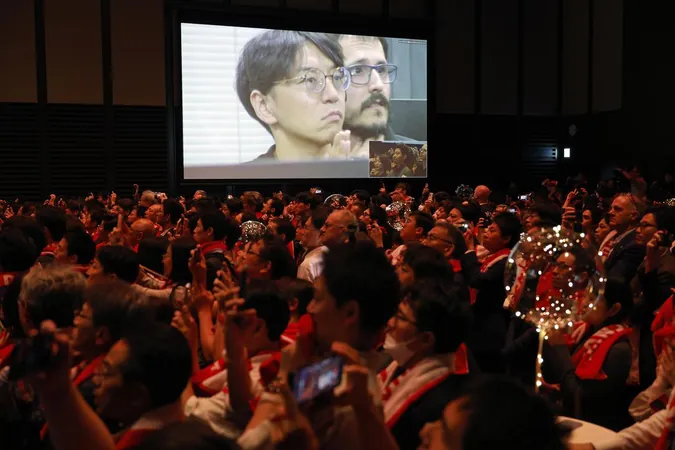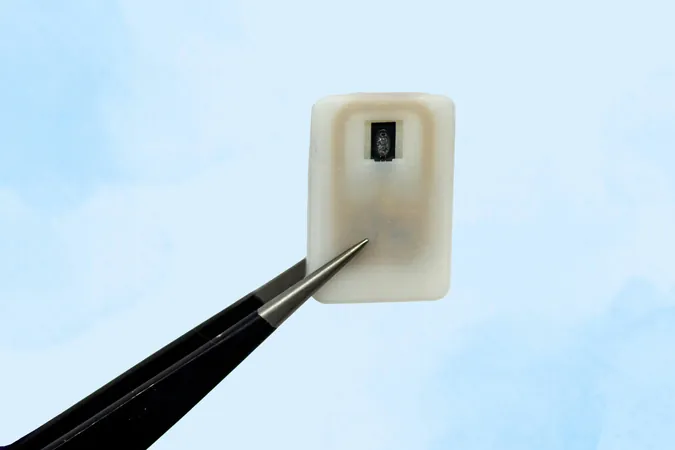
Japan's Lunar Dreams Shattered: Second ispace Lander Fails After Contact Lost
2025-06-05
Author: Jia
In a heartbreaking blow to Japan's emerging commercial space industry, Tokyo-based ispace Inc. has confirmed that it is unable to regain contact with its lunar lander, Resilience, after its much-anticipated landing attempt on June 6.
The live stream of the landing, eagerly watched by over 17,000 viewers, was abruptly cut off when communication with the lander was lost just before its scheduled touchdown at 4 AM Japan time. Following the news, ispace's stock took a hit, with a flurry of sell orders flooding the Tokyo market.
Takeshi Hakamada, founder and CEO of ispace, expressed his concerns at a press conference, stating, "There is a high possibility the lander made a hard landing on the moon," speculating that it may not have had sufficient time to decelerate. However, he remains determined, emphasizing the importance of utilizing lessons learned for future endeavors.
This failure comes on the heels of another setback in 2023 when a programming error caused a previous mission to crash. Had this attempt succeeded, ispace would have made history as the first non-U.S. company to successfully land a spacecraft on the moon, joining the ranks of American companies like Intuitive Machines and Firefly Aerospace, who have already achieved lunar landings.
The Resilience lander was launched aboard one of Elon Musk's SpaceX Falcon 9 rockets in January, alongside Firefly's successful lunar lander, which landed on the moon in March.
Resilience was set to deploy its rover, Tenacious, equipped with a high-definition camera and tools for collecting lunar regolith. This mission was especially significant as ispace had signed a contract with NASA in 2020 to provide the U.S. space agency with samples from the lunar surface.
Aside from scientific instruments, the lander also carried a commemorative plate from Bandai Namco Research Institute, tied to the famous gaming universe of Pac Man and Gundam, alongside experimental gear designed to extract hydrogen from water.
Looking ahead, ispace has ambitious plans to increase its lunar missions frequency, targeting two to three payload deliveries per year starting in 2027. Hakamada envisions that humans might even begin making a sustainable living on the moon by the 2040s.
Reflecting on the importance of resilience in the face of setbacks, Hakamada stated, "Japan will lose out on opportunities for growth if we shy away from failures. It would be a massive loss for our society if such setbacks deter us from bold pursuits and explorations."



 Brasil (PT)
Brasil (PT)
 Canada (EN)
Canada (EN)
 Chile (ES)
Chile (ES)
 Česko (CS)
Česko (CS)
 대한민국 (KO)
대한민국 (KO)
 España (ES)
España (ES)
 France (FR)
France (FR)
 Hong Kong (EN)
Hong Kong (EN)
 Italia (IT)
Italia (IT)
 日本 (JA)
日本 (JA)
 Magyarország (HU)
Magyarország (HU)
 Norge (NO)
Norge (NO)
 Polska (PL)
Polska (PL)
 Schweiz (DE)
Schweiz (DE)
 Singapore (EN)
Singapore (EN)
 Sverige (SV)
Sverige (SV)
 Suomi (FI)
Suomi (FI)
 Türkiye (TR)
Türkiye (TR)
 الإمارات العربية المتحدة (AR)
الإمارات العربية المتحدة (AR)